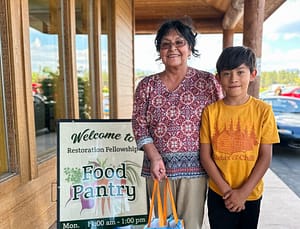It’s that time of year- I’m sure you’ve seen plenty of winter squash filling the shelves at the grocery stores, but they’re also filling our shelves here at the food bank. We’re fortunate to receive so many varieties to pass along to our partner agencies.
You are likely familiar with the first two varieties- butternut and spaghetti squash.
….but have you ever seen a Hubbard squash? Very few of us here have either.
This is a close up of the squash.
We found a few Hubbard squash recipes we thought we’d share in case you are wondering what you do with these massive vegetables.
Grandma’s Sweet Hubbard Squash Custard Pie
Interesting facts about Hubbard Squash:
All squashes provide Vitamin A and Vitamin C, some of the B vitamins, iron, and are a good source of Riboflavin and dietary fiber. Deep-colored squashes have the most Beta Carotene. About 100 calories are in one cup of cooked squash.
Difficult to peel and cube because of its rigid exterior, Hubbard squash is most often cooked in its skin. Carefully halve Hubbard squash, if they are purchased whole, remove seeds and roast, cut-side down, until tender when pierced with fork. Prepare the same way if purchasing pre-cut sections. Scoop cooked flesh from the skin and puree into soup or stew. Cooked squash can also be mixed with wild rice or whole grains and baked into casseroles. For a sweet preparation, mix pureed squash with cream, sugar, eggs, spices and bake into pie. To store whole squash, keep in a dry cool area. Refrigerate plastic-wrapped cut pieces up to five days.
Post a comment- have you ever eaten Hubbard Squash? How was it?









